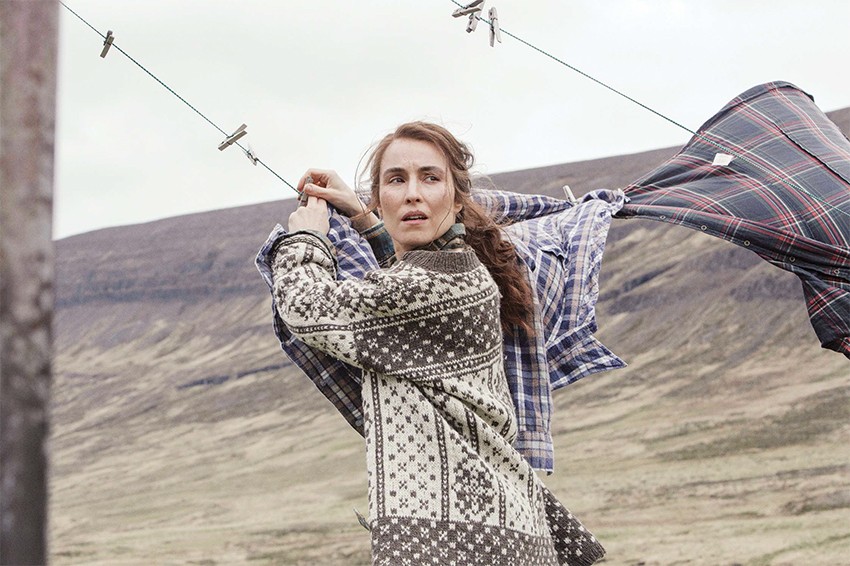09/10/2021
09/10/2021
Noomi Rapace flew into Iceland to film “Lamb” on a Sunday and on Monday morning, she was literally delivering baby lambs on camera. There wasn’t time to wait or practice. It was the last week of lambing season and the crew had already told the mother sheep that they could not give birth until Rapace arrived. They were at least half-joking. Although Rapace has been put to the test in films like “Prometheus” and “The Girl with the Dragon Tattoo,” delivering baby animals was a new one. “I had this adrenaline rush right before I stepped in and I could just feel my heart racing,” Rapace said. “And then as soon as I was in the situation, it just felt so natural. It felt like I know how to do this weirdly enough.

You don’t have time to think or to be nervous. You just got to do it, you know?” In some ways, it was an appropriately intense and bizarre start for what is certainly an intense and bizarre film in which a childless couple, María (Rapace) and Ingvar (Hilmir Snaer Gudnason), discover a half lamb, half human baby in their barn and decide to raise her as their own. It’s almost a no-brainer that A24, the studio and distributor that has put out films like “Midsommar” and “The Lobster,” would jump at the chance to bring this strange Icelandic tale to a wide audience (it opened Friday in North American theaters). “Lamb” is the feature debut of Valdimar Jóhannsson, who has spent much of his career working various crew jobs for Hollywood productions that make a stop in Iceland. “Prometheus” was actually one such gig (he laughed that he worked in the “smoke and fog department”) but he didn’t cross paths with Rapace there. Still, he knew she’d be perfect for María, who wants a child of her own.
Plus, she already spoke Icelandic, having lived there for a bit as a kid. Jóhannsson can’t quite remember how the idea came to him, but he started collecting haunting images and put together a scrapbook that he delivered to Rapace along with a script he co-wrote with Sjón, an Icelandic poet and novelist. “It’s a family drama with just one element that is off,” said Rapace, laughing. “It’s such a beautiful story about motherhood. She’s like trapped in this limbo reality of grief in the beginning, and then she’s given this opportunity to heal. María’s journey was so inspiring and original and strange at the same time. I love the simplicity of the story.” The shoot was not quite as simple. To create the child, Ada, production used 10 children of various ages and four lambs and edited them together. There was very little CGI, Jóhannsson said. It’s perhaps why the image is so disarming and effective.
Isolated
On top of that, the set was in a very isolated region of Iceland, where sheep already outnumber humans two to one, with no phone signal and where the sunlight shines for nearly 20 hours a day. “I feel like I left the world and I was living within this reality for three months. María very much took over me and my body and my dreams,” Rapace said. “But it helps you… And it really refl ected the way a lot of people live in Iceland. My grandmother, family members of mine, they do live on those remote farms.” Rapace loves too that the film taps into something primal and mythological. “When I was pregnant with my son I dreamt that I gave birth to like weird creatures.
My worst nightmare would be to give birth to something that is half human. I’ve done it in ‘Prometheus’ and here I’m the mother of something that’s in between,” she said. “For me, films are freedom and there’s no rules and we can explore and investigate from a place of total freedom. There’s no bad. There’s no good. It’s just like ‘what are we? What is the human species and what else is there?’” Jóhannsson didn’t make the film thinking it would get a big international release, but he’s excited that it is. And he said he was actually more nervous for the premiere in Iceland than at the Cannes Film Festival. “The Icelandic people, you know if you shoot something in the North and then cut it with something in the South, they’ll be like ‘it’s not how it is! I don’t recognize that!’” he said. But it turns out he didn’t have anything to fear: Icelandic sheep farmers liked it too. By Lindsey Bahr


